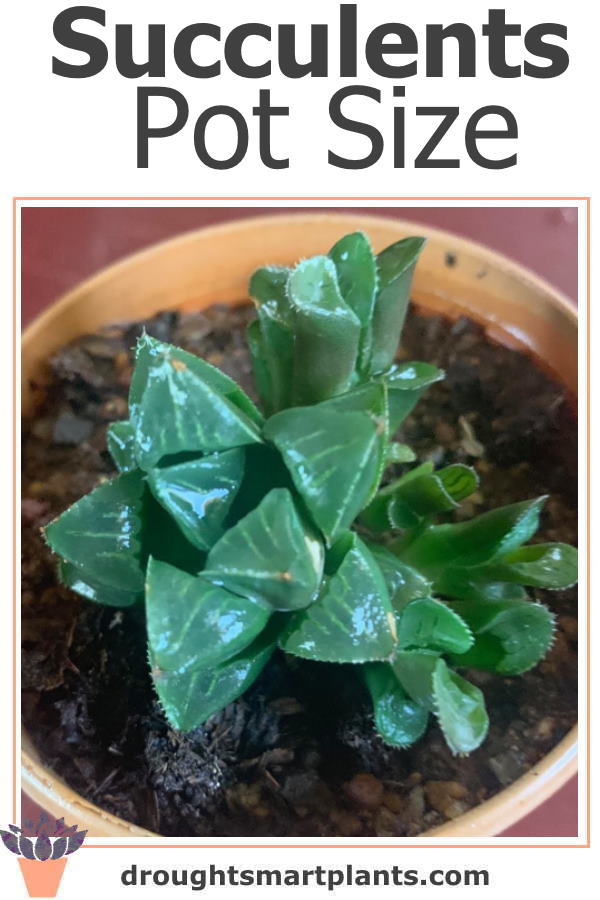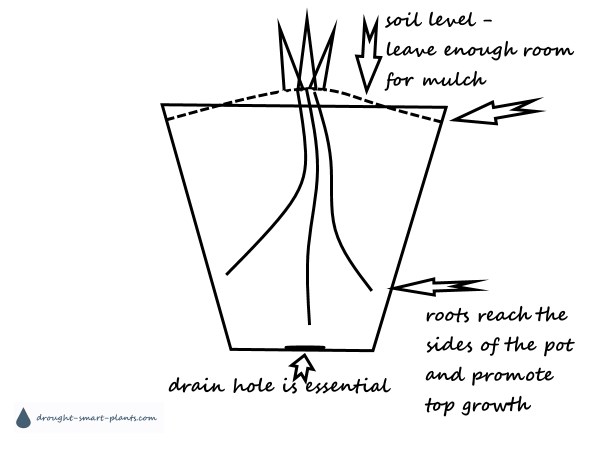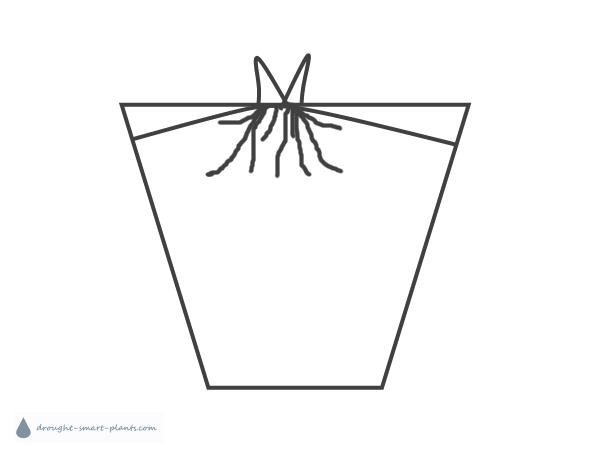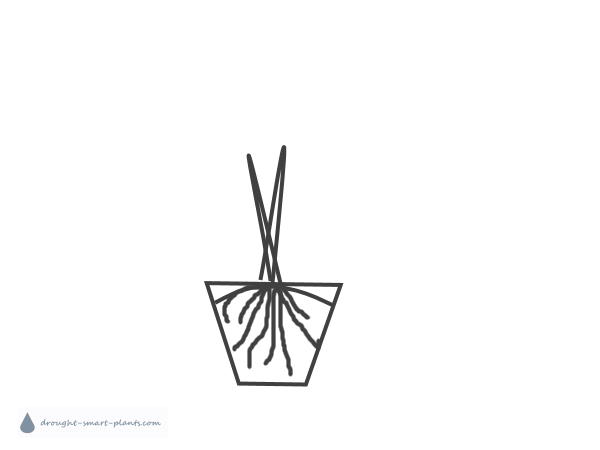Tips for Choosing the Perfect Planter
Choosing the perfect sized pot for your succulent plant can be challenging.
Lots of sources claim you should give them lots of room to grow.
But is this really necessary with succulents?
I say no, they can grow in barely a teaspoon of soil, which suits them perfectly.
Find out how to perfectly size the pot for a healthy, happy succulent.

Many succulents have two kinds of roots – a tap root, which is fleshy and stores excess moisture, and also delves deep into the earth to seek out water from lower levels, and smaller fine hair roots which stay close to the surface to access rain showers or dew.
See more about the root systems of plants here.
Too big of a pot is probably the number one issue that people have when growing succulents.
Not only does it take a ton of soil, but it also holds way too much water.
A succulent plant stranded in the middle of a large pot will not be happy; they may survive, but there’s no incentive to grow much.

Large pots with huge amounts of root room don’t allow the plant to fill the pot with roots.
It’s kind of a rebound effect; the roots hit the sides and bottom of a smaller pot, which then encourages the plant to send up top growth. See the diagram above for more on this.
As an added advantage for plants that don’t like too much water, the smaller amount of soil won’t hold excess moisture.
Planting Succulents;
or; How it Should Look if You Could See Inside the Pot;


The ideal size of a pot for most succulents is that it’s about five to ten percent bigger than the size of the plant at the surface.
For rosette type succulents, this would mean that an Echeveria of around 3″ across would fit into something that is around 3.5 to 4″ across, or just a little bigger than the rosette..
Echeveria and many other succulents don’t have much in the way of tap roots, so they can be planted successfully into a shallow bowl shape of a planter. Other plants like Jovibarba heuffelii need more depth with their extensive tap root system.
Whichever type of planter you use, make sure it’s got adequate drainage – ie; a drain hole.
Old time gardeners had it right with their reliance on terracotta clay pots.
Not only do they have a good sized drainage hole, but the clay sides are porous and allow air exchange – just what succulents like.
In addition, there is much less risk of a large succulent plant toppling over if the pot is heavier clay or hypertufa.
Also, the rough surface of this type of clay or concrete encourages the roots to split and grow more vigorously, unlike something smooth like a glazed pot, or plastic.
There are lots of blog posts out there recommending the use of terrariums, tea cups and other types of hole-less containers, but cute as they are, these should only be used for short term display.

